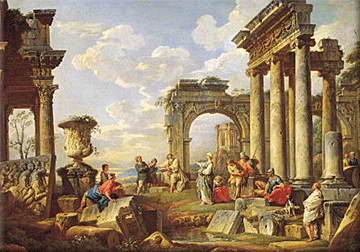-Etruscan Revival 1880 Scarab Micro Mosaic Bracelet In 18Kt Yellow Gold
An Etruscan revival bracelet.
An exceptional piece, created in Italy during the Victorian (1840-1901) era, back in the 1880. It was carefully crafted with Etruscan revival patterns in solid rich yellow gold of 18 karats and embellished with an intricate micro mosaic depicting a scarab. Decorated with an intricate dotted pattern geometrically placed
The micro mosaic is of Italian origins, created from more than 400 tiny pieces, carved from natural stones, such; blue lapis lazuli, red coral, black onyx, green malachite, black onyx, lava, creme nacre and 24k gold.
This piece of art is composed by elements from several artistic movements, carefully mixed together, such the Victorian era, the Etruscan revival and the Egyptian revival.
Weight: 25.95 Grams, (16.64 Dwt).
Size: Fit a wrist up to 6.5 Inches, (16.5 Cm).
Measurements: The central part is 28 mm by 29 mm 1.10 x 1.14 (Inches).
Hallmarks: None, tested for 18 karats .750/.999 Gold.
History Behind This Piece
Between the 1820 and 1890, ancient cities were discovered, such as Troy, Pompeii and Alexandria. Archaeological excavations in Egypt, Greece and Rome, discovered artistic pieces of these ancient cultures. These fabulous discoveries, stimulated cultural trips to these countries, popularly called "grand tour". Being the case that the enthusiast visitors bring back small objects, like souvenirs to be assembled into jewelry. The starting point of these trips were in the cities of Rome and Venice. this is why the craftsmen of these cities created small and interesting objects with ancient characteristics like this bracelet.


Revival jewelry: The styles from the renaissance and Middle Ages, begun in the 1850’s, The Renaissance and Egyptian revivals were joined by a classical revival of Greek and Etruscan styles to conform a new aesthetic. As a result of the construction work on the Suez Canal in the mid-1860’s and the Egyptian excavations of Auguste Mariette and the resultant exhibit of Egyptian treasures at the exposition Universelle in 1867, a fascination for all things Egyptian and ancient cultures developed.
Note: Many nineteenth-century jewelers, were inspired to create their own versions of these ancient pieces, hence “Etruscan Revival”, the most famous being the House of Castellani. Characteristics of Etruscan style jewelry include use of high karat gold and semi-precious stones like lapis, malachite and agates, and most distinguishingly, the use of intricate filigree and granulation.
Collateral: This bracelet is accompanied by a presentation jewelry box.
Condition: The overall condition of this bracelet is excellent. Beside the little normal wear, there is no damage to the gold. All mosaic pieces are secured in the settings. This piece has been carefully inspected to guarantee the condition and authenticity.
INVENTORY REF: B111722SREM/.6237
























